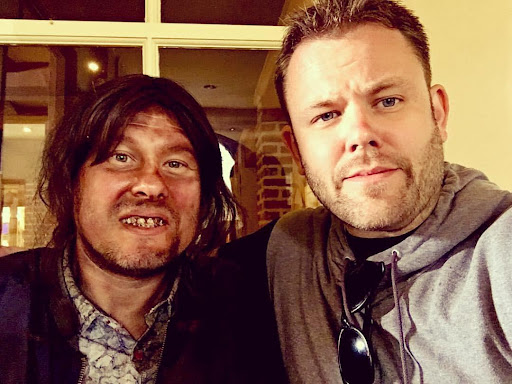Mark Murphy, director of horror films The Crypt and Awaiting, graduated from film school in 1996. He has since worked on several other critically acclaimed films, including For Love Or Money and The Comedian’s Guide To Survival.
This article will look at the challenges involved in producing psychological thrillers and creating suspense in unpredictable ways to build tension, keeping audiences on the edge of their seats.
In 2014, Mark Murphy (Solar Productions company director) followed his first feature film, The Crypt, with a second movie starring Diana Vickers, Tony Curran, and Rupert Hill. Awaiting earned best picture and best director awards at several international film festivals.
The plot of Awaiting follows Morris, a psychotic recluse with cannibalistic tendencies played by Tony Curran. Morris’s life changes forever when his innocent daughter, played by Diana Vickers, rescues one of his victims, befriending him. Jake, played by Rupert Hill, is a businessman who soon realizes that he is stranded, with his presence in the house paving the way for some unexpected revelations and dark mysteries emerging from the past.
Speaking about the movie, Diana Vickers said she was immediately drawn to the script, explaining that it was an exciting experience filming her first UK feature film. A fan of psychological thrillers, before filming she had been shooting a lot of comedy. Diana Vickers described Awaiting as a great change and a great opportunity to get her teeth into.
Psychological thrillers are a thriller subgenre that explores the psychology of their characters, who are often somewhat unstable. In a psychological thriller, the plotline’s biggest questions revolve around the characters’ minds and behavior. Often incorporating elements of mystery and themes of morality, mental illness, substance abuse, crime, a dissolving sense of reality, unreliable narrators, or multiple realities, a psychological thriller requires laser-focused expertise on the part of the writer to keep the reader focused.
The primary goals of the thriller genre are to generate interest, excitement, exhilaration, and suspense. The psychological thriller genre overlaps somewhat with psychological horror stories like The Shining by Stephen King, although the latter includes more elements of terror. Psychological thrillers also tend to stay away from elements of science fiction, with more focus on events that could take place in real life.
Psychological thrillers vary widely from one to the next in terms of storyline. However, common elements include:
- Familiar elements, with many examples staged in the home. Psychological thrillers center around characters that seem perfectly ordinary, causing the viewer to ask themselves: ‘What if this happened to me?’
- An unreliable narrator, or other important character, creates suspense as the reader tries to work out who they can trust. Paranoia, lies and flawed memories are all staples of the genre.
- Psychological thrillers incorporate major plot twists. With so much of their excitement hinging on unexpected twists and turns, the experience can be ruined by spoilers.
Just as a comedy with no jokes will fall flat, so too will a thriller without suspense. Some films in the thriller genre are so focused on the film’s premise and the payoff that they fall short in terms of building suspense. A great thriller is more concerned with building anticipation of an event rather than focusing on the payoff moment.
In terms of making psychological thriller movies, it is important to be selective with action, resisting the urge to flood scripts with unnecessary action sequences designed to ‘thrill’ audiences – as their true effect merely takes away from the plot’s pensiveness. Rather than action, thrillers are about anticipation.
Music can make or break a movie. A common mistake made by inexperienced filmmakers is overusing suspenseful music to compensate for a lack of depth in scenes. However, successful thrillers like Stephen Spielberg’s War of the Worlds successfully utilize both music and silence to build atmosphere, tension, and suspense, making scenes more impactful.
Both writers and filmmakers must focus on one major idea at a time rather than attempting to force too many ideas on the audience. Directors must keep viewers guessing rather than flooding a film with potential suspects and outcomes, which will only leave the audience feeling disorientated and cause them to lose interest. A better approach is to focus on a single idea at any given point, with twists and turns used only when necessary, helping the filmmaker to stay ahead of their audience.
Keeping tensions high depends on filmmakers showing characters in tense situations, or structurally rearranging parts of the chapter to keep the pace swift. Writers need to craft situations where characters are unable to get the tools or information they need, forcing them to strategize and take action to reach their goals. Achieving this depends on creating believable scenarios where characters do not have an easy way of getting what they need. Writers need to flesh out backstory, heightening tension with descriptive elements that place pressure on characters and create a sense of urgency.






